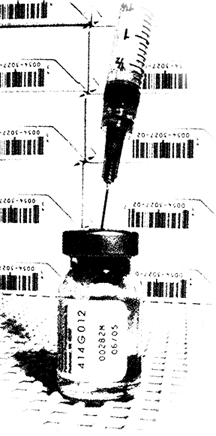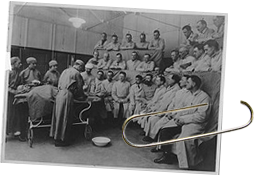

|
CHART #
00830194672 |
PRIMARY FACILITY
Vestibriüm University Hospital |
CODE
|
ATTENDING PHYSICIAN
Süurd (via Kördann) |
TYPE
A |
AU
|
|
DISPOSITION (STATUS)
In progress |
ARTICLE (JOURNAL REF)
Interview: Ruminations of Dr. S |
||||


(The following excerpts originally appeared as a two-part interview in Benway's Journal of Bedraggled Practices, v.1.0 & 1.1. 1973, Interzone Press, SRCU; Tangier, Africa.)
Q: You studied medicine at Harvard in 1904, then again in 1963...

A: For a number of years, I held a job as a surgeon. Professional position. Worked in a big hospital -- down in the basement where it was cold. Everything was very clean, though. And dry as ether. I remember giving demonstrations in a large operating amphitheater. The white-jacketed medical students negotiated competitively for vantage points from which to behold those spectacles. I really packed them in -- those arrogant sons of wealthy bitches. With the patient nearly anesthetized, I addressed the assembly: "Gentlemen..." (Since, in those days, there were no women of any kind in medical school.) "Gentlemen," I said. "You are about to witness an inherently unique procedure." At this point, my assistant began cutting -- usually with a scalpel. "There's nothing wrong with this subject -- the patient, if you will. Nothing at all wrong with him..." I worked my way into a pair of old gloves as my associate (whose grandfather is said to have invented the adding machine) continued to indiscriminately slice flesh with the near-reckless abandon of a would-be Pollock. Abruptly, he ripped the mask from his face, and backed away in awe. "Now," I continued, advancing on the bloody mess, "As you may readily observe, the patient has been prepped. (And quite well, I might add.) So let's see what we can do." I picked through the desecrated tissue with a pair of tongs, sorting any loose parts by color and shape. (I discarded those I didn't particularly care for.) "At its inception, it was quite something, you understand. But the human body is getting old," I declared. "It's left to us to make something interesting of it." Of course, in those days, we had never heard the term "performance art." But I knew full well that these surgical demonstrations -- these exhibitions -- were art. It wasn't textbook, so the studious on-lookers couldn't quite figure it out, but they could sense that this was something beyond pedestrian entertainment. I completely ignored the emerging trend towards science, and it was that particular gimmick which proved so popular with the young folks. ("I will now solder another glass eye to the femur...") After all, the operating room is a workshop, and the surgical amphitheater is nothing more (or less) than a twentieth-century coliseum. Clinical, to be sure. But the sight of human blood never fails to make a crowd salivate. (Figuratively, of course.) Those were exciting and formative years. I tell you, I've forgotten most of the fancy stuff -- like the tricks behind those functional models, but in my prime I could cut and sew with the best. Nowadays, surgery is complicated. And so convoluted by all that modern equipment... You practically need a degree. There's a hospital a few blocks from me, and sometimes I stop by to continue my practice. Cutting starts around 5:30 a.m., so I get there at four to ensure my spot. They (some of the staff) seemed reluctant at first, but when I assured them I would wash my hands between patients, they agreed to assign me a table. I don't pretend to keep up with the kids, but it remains an engaging hobby. Perhaps someday I'll make something of myself.